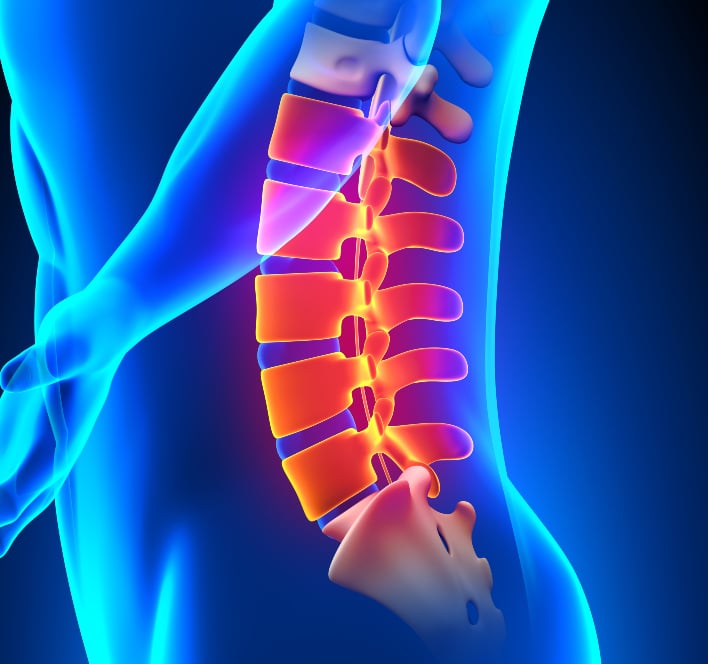Median branch nerve blocks, a critical tool in the management of facet joint disorders, offer intriguing potential for enhancing patient care. As a procedure that necessitates precision in nerve mapping and needle placement, its success hinges on a myriad of factors. While the benefits are considerable, it is crucial to keep in mind the associated risks. Are we, as medical professionals, fully utilizing these minimally invasive procedures, and how might we mitigate potential side effects? A deeper exploration into these questions could help optimize the use of median branch nerve blocks in pain management.
Understanding Median Branch Nerve Blocks
In the realm of pain management, Median Branch Nerve Blocks (MBNB) play a crucial role, tailored specifically to alleviate discomfort by interrupting the nerve signals transmitting pain from the facet joints to the brain. This interruption is achieved through the injection of a local anesthetic around the medial branch nerves. The procedure is minimally invasive and often results in notable pain reduction for patients suffering from facet joint disorders.
However, several misconceptions surround this procedure. One common misconception is that MBNB provides a thorough solution to facet joint pain. In reality, the relief provided by MBNB is temporary, and the duration of relief varies among individuals. Another misconception is that MBNB is the sole solution for facet joint pain. Instead, it is one of many block procedure alternatives which also include therapeutic options, such as physical therapy, facet joint injections, and radiofrequency ablation.
A deep understanding of the MBNB procedure, its limitations, and its alternatives can greatly enhance its effectiveness in managing facet joint pain. This knowledge can also help dispel misconceptions, ensuring that patients have realistic expectations regarding the procedure’s outcomes.
Anatomy Involved in the Procedure
Comprehending the intricate anatomical structures involved in a Median Branch Nerve Block is fundamental to appreciate the procedure’s efficacy and potential complications. The median branch nerves are the terminal branches of the dorsal rami, which innervate the facet joints and the paravertebral muscles. The complexity of these structures demands precise nerve mapping techniques, which guide the clinician in the accurate delivery of the nerve-blocking agent.
Anatomical variations impact the procedure greatly, necessitating a thorough understanding of both standard and variant anatomy. For instance, the nerves’ location relative to the facet joint varies, with some positioned superiorly, others inferiorly, or even within the joint capsule itself. Moreover, the branching pattern of the nerves may differ, with some nerves branching before reaching the facet joint, and others after. This complexity underscores the importance of thorough anatomical knowledge and precision in technique.
The depth and angle of needle insertion, the volume and concentration of the blocking agent, and the patient’s positioning all depend on the specific anatomical structures involved. These factors, influenced by individual anatomy, determine the effectiveness of the block and the potential for complications. Understanding the anatomy involved in the procedure is central to its successful execution.
The Role of Diagnostic Blocks
The role of diagnostic blocks in the context of median branch nerve blocks is pivotal, serving as a critical tool for evaluating nerve disorders. They allow for the precise identification of the nerves responsible for transmitting pain, thereby facilitating targeted treatments. However, their application necessitates a thorough understanding of potential risks and necessary precautions to guarantee patient safety.
Understanding Diagnostic Blocks
Diagnostic blocks, pivotal in the field of pain management, serve as invaluable tools for accurately identifying the specific nerves causing pain. These blocks, typically achieved via injection of local anesthetics, temporarily interrupt nerve conduction, altering pain perception, and thereby, pinpointing the origin of pain. The effectiveness of these blocks is reliant on the precision of placement, and the patient’s subsequent pain relief. Misplacement or incomplete block can lead to false-negative results, complicating the diagnostic process. Conversely, complete and accurately placed blocks can provide immediate, although temporary, pain relief. Understanding the intricacies of diagnostic blocks is essential for their successful application in clinical practice, ensuring that the correct nerves are targeted, and the most effective treatment plan is implemented.
Application in Nerve Disorders
In the domain of nerve disorders, diagnostic blocks play a pivotal role, offering clinicians an effective method to distinguish the exact nerve or set of nerves responsible for a patient’s pain. They facilitate precise pain management, often leading to improved treatment outcomes. However, nerve block misconceptions abound, such as beliefs that they always yield immediate or enduring pain relief. The reality is that diagnostic blocks serve primarily as investigative tools. Their goal is to help identify the specific nerve causative of the pain, thus informing the selection of subsequent treatment strategies. These may include alternative treatments like physiotherapy, medication management, or surgical interventions. In this way, diagnostic blocks in the context of median branch nerve blocks are an important component of thorough nerve disorder management.
Risks and Precautions
While median branch nerve blocks serve as pivotal diagnostic tools, it’s important to acknowledge the potential risks and necessary precautions associated with this procedure. Risks include infection, bleeding, and an adverse reaction to the local anaesthetic. In addition, inadvertent injection into a vascular structure could lead to serious complications. Patient candidacy must be carefully considered. Patients with coagulopathy or those on anticoagulant therapy may not be suitable candidates due to the risk of bleeding. Alternatives to nerve blocks, such as imaging studies or conservative management, may be safer for these patients. Meticulous technique and sterile conditions can minimize the risk of infections. Lastly, a thorough understanding of the anatomical structures is essential to avoid inadvertent vascular injection.
Steps in Performing Nerve Blocks
Administering nerve blocks involves a precise and methodical approach, requiring in-depth anatomical knowledge and skillful technique. Primarily, block techniques involve the identification of the nerve location, known as nerve localization. This typically mandates the use of an ultrasound, fluoroscopy or nerve stimulator, to guarantee accurate needle placement.
Once the nerve is localized, the skin and tissues surrounding the targeted nerve are sterilized to prevent infection. Following sterilization, local anesthetic is applied to numb the skin, and a needle is then inserted towards the nerve under imaging guidance.
The next step in performing nerve blocks is the injection of the blocking solution. It is crucial to confirm the correct needle placement before administering the solution, to avoid inadvertent injection into blood vessels or other unintended areas.
Lastly, after the procedure, patients are closely monitored for any adverse reactions until the anesthetic effects diminish. Nerve blocks are an effective tool for pain management, but their success largely depends on the clinician’s accuracy in nerve localization and adherence to meticulous block techniques. This underlines the importance of surgical expertise and precision in executing this procedure.

Possible Risks and Side Effects
As we continue our discussion on Median Branch Nerve Blocks, it’s crucial to examine the potential risks and side effects associated with this procedure. We will explore the possible complications, shedding light on the identification of common side effects, and the necessary steps for the management of risks post-procedure. This in-depth analysis will aid in the understanding and prevention of adverse outcomes, thereby enhancing the safety and efficacy of this intervention.
Understanding Potential Complications
What potential complications might one encounter with median branch nerve blocks? The risks involved in this procedure are primarily related to incorrect needle placement or reaction to the injected substances. Inaccurate needle placement can result in damage to adjacent structures such as blood vessels or unintended nerves. This could lead to neurological complications like numbness, weakness, or even paralysis. Allergic reactions, although rare, can occur to the local anesthetics or steroids used.
Considering nerve block alternatives is essential when patient selection criteria indicate higher risk for these complications. For patients with coagulation disorders, diabetes, or significant allergies, alternative treatments like physical therapy, medications, or even surgical interventions might be more suitable. It’s important to evaluate each patient’s individual situation to ensure the best possible outcome.
Identifying Common Side Effects
While understanding the potential complications of median branch nerve blocks is essential, it is equally important to identify the common side effects associated with this procedure. These may include temporary pain at the injection site, infection, bleeding, or allergic reaction to the medication. There may also be a temporary increase in nerve pain due to the mechanical process of needle insertion. In some cases, patients experience unintended numbness or weakness in the area of the nerve block. It’s important to take into account these patient experiences when evaluating nerve block alternatives. While rare, more serious side effects like nerve damage or pneumothorax can occur. Hence, patient education and informed consent are fundamental components of treatment planning.
Managing Post-Procedure Risks
Post-procedure management of median branch nerve blocks involves a vital understanding of the possible risks and side effects, along with the establishment of effective strategies to handle these potential complications. Risk mitigation strategies are paramount in reducing incidences of post-interventional pain, infection, or hematoma. These strategies often involve meticulous aseptic technique, precise needle placement, and judicious use of local anaesthetics and steroids.
Post block physiotherapy is another essential component in managing post-procedure risks. It aids in restoring function and alleviating residual pain. Tailored exercise regimens can also prevent potential complications such as muscle atrophy or joint stiffness. Hence, a holistic approach that integrates risk mitigation strategies and post block physiotherapy is integral to successful post-procedure management.
Potential Benefits of Nerve Blocks
The myriad potential benefits of nerve blocks, particularly median branch blocks, encompass both diagnostic and therapeutic advantages, lending to their widespread use in managing chronic pain conditions. A key benefit lies in their role as nerve block alternatives, offering a less invasive method to manage pain compared to surgical interventions or opioid-based treatment plans.
In the context of pain assessment techniques, median branch blocks allow for targeted delivery of anesthetics, effectively isolating the pain source and providing valuable diagnostic information. This level of precision enables the identification of specific nerve sets responsible for transmitting pain signals, thereby enhancing the accuracy of pain localization and aiding in the formulation of an effective therapeutic strategy.
In terms of therapeutic benefits, median branch nerve blocks provide immediate and significant pain relief. The procedure itself is relatively quick, typically requiring less than 30 minutes, and patients often report a decrease in pain within minutes of the block’s administration. The duration of relief can extend for several months, reducing the frequency of hospital visits and improving overall quality of life. The benefits, hence, extend beyond the immediate physiological implications, contributing to improved patient well-being and autonomy.
Exploring the Success Rate
Building on the highlighted benefits, it is equally important to examine the success rate of median branch nerve blocks in achieving their intended diagnostic and therapeutic goals. Block effectiveness variations often depend on several factors, such as the accuracy of needle placement, the type of local anesthetic used, and the individual patient’s physiological response to the procedure.
Research has depicted a wide range of success rates, from as low as 30% to as high as 90%. The wide range is a reflection of the complex nature of the procedure and the unique circumstances surrounding each patient. Patient experiences also play a crucial role in determining the success rate of the procedure. The level of pain relief experienced post-procedure, the duration of that relief, and the impact on the patient’s quality of life are all essential indicators of success.
However, one should consider that the success of the procedure also hinges on the accuracy of the initial diagnosis. A successful block in a wrongly diagnosed patient will not result in lasting pain relief. Therefore, thorough medical evaluation and precise diagnosis are integral to enhancing the success rate of median branch nerve blocks.

Post-Procedure Care and Recovery
Getting through the recovery period after a median branch nerve block involves careful attention to post-procedure care, which plays a pivotal role in the overall success and patient’s satisfaction with the intervention. This phase includes diligent pain assessment to ascertain the effectiveness of the procedure and detect any deviations from expected outcomes.
Regular pain assessment is important in tailoring a personalized recovery plan. Healthcare providers should utilize validated pain scoring tools to quantify the patient’s discomfort. Observations should be recorded systematically, and any significant changes should prompt re-evaluation of treatment strategies.
Medication interactions form another critical facet of post-procedure care. The patient’s existing pharmacological regimen should be thoroughly reviewed, with an emphasis on drugs that may interact with analgesics used during or after the procedure. These interactions could potentially alter the efficacy of the pain management strategy, induce adverse effects, or exacerbate pre-existing conditions.
Given the complexity of medication interactions, the use of specialized software may be beneficial to identify potential risks. Any identified interactions should be managed proactively, either by adjusting dosages or substituting interacting drugs with safer alternatives.
Comparing Other Pain Management Techniques
In the broader context of pain management, various techniques aside from median branch nerve blocks present alternative, yet equally significant, strategies for mitigating discomfort and enhancing patients’ quality of life. These encompass a spectrum of non-surgical alternatives aimed at pain threshold variation and symptom management.
Physiotherapy, for instance, harnesses the body’s own healing mechanisms through guided exercises and movements. This approach enhances mobility and resilience, thereby increasing the pain threshold over time. Similarly, acupuncture, an ancient technique, involves the insertion of needles at specific points to stimulate the body’s pain response, modifying the pain threshold variation and promoting a sense of well-being.
Pharmacological management, on the other hand, utilizes medications like non-steroidal anti-inflammatory drugs (NSAIDs), analgesics, and corticosteroids to directly address inflammatory responses and pain stimuli. Additionally, cognitive-behavioral therapy (CBT) targets the psychological aspect of pain, helping patients develop coping mechanisms and a positive mindset.
Case Studies in Nerve Block Treatments
Through an examination of various case studies, we can gain valuable insights into the efficacy and application of nerve block treatments in diverse clinical scenarios. In one study, a 45-year-old patient with chronic back pain experienced significant relief after a median branch nerve block. This relief extended over several weeks, demonstrating notable block longevity.
Another case involved a 67-year-old patient suffering from painful osteoarthritis. The patient reported a substantial reduction in pain following the nerve block treatment, highlighting the potential benefits of this procedure in managing degenerative joint diseases.
Patient experiences in these cases were overwhelmingly positive, with marked improvements in pain management and quality of life. Additionally, the longevity of the block was remarkable, with several patients reporting sustained relief beyond initial projections.
In contrast, a case involving a younger patient with neuropathic pain showed less promising results. While the initial response was positive, the block’s longevity was reduced – a likely reflection of the complex nature of neuropathic pain and its management.
These cases underscore the potential benefits and limitations of nerve block treatments and emphasize the need for personalized, patient-centric approaches in pain management.
Future Developments in Nerve Blocks
Looking to the horizon of medical advancements, it becomes clear that the future of nerve block treatments holds promising potential for further refinement and improved efficacy in pain management. Nerve block advancements are expected, with technological innovations playing a substantial role in propelling these developments.
The advent of ultrasound-guided nerve blocks has opened a new frontier in providing precise and efficient delivery of anaesthetics, minimizing harm to adjacent structures. Future developments may involve advancements in imaging technologies for even more precise targeting.
Technological innovations are also expected to enhance the monitoring of nerve block procedures, potentially mitigating risks of complications. The application of machine learning and artificial intelligence could automate the recognition of nerve structures, improving accuracy and reducing procedure time.
A growing interest lies in the development of new local anaesthetic agents with extended duration of action and fewer side effects, enhancing the efficacy and safety of nerve blocks. Also, innovative delivery methods such as nanoparticle-based systems for controlled drug release may be explored.
These potential advancements could alter the landscape of nerve block treatments significantly, offering improved patient outcomes and expanding the scope of applications in pain management.
Frequently Asked Questions
Can Nerve Blocks Be Used in Conjunction With Other Pain Management Treatments?
Yes, nerve block efficacy can be enhanced when utilized with other pain management treatments. The application of combination therapies can provide synergistic effects, improving overall pain relief and patient quality of life.
How Often Do Patients Require Additional Nerve Block Procedures?
The frequency of additional nerve block procedures largely depends on the individual’s pain recurrence. Some patients may require repeated procedures for effective pain management, while others may find long-term relief after a single procedure.
Are There Any Specific Conditions or Scenarios Where Nerve Blocks Are Not Recommended?
Block contraindications can include active infection, allergy to anesthetics, coagulopathy, or patient refusal. Risk factors such as uncontrolled diabetes or heart disease may also discourage the use of nerve blocks in certain scenarios.
Does Insurance Typically Cover the Cost of Median Branch Nerve Blocks?
Insurance policies vary widely, and coverage for specific procedures can be subject to limitations or exclusions. It is always recommended to check with the insurance provider to determine the extent of coverage for any medical procedure.
Are There Any Lifestyle Changes or Restrictions Required Before or After the Procedure?
Certain lifestyle modifications may be necessary pre-procedure, such as ceasing certain medications. Post-procedure care often involves rest, avoiding strenuous activity, and possible physical therapy or pain management strategies. Individual recommendations may vary based on patient conditions.

